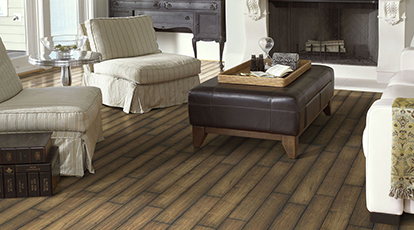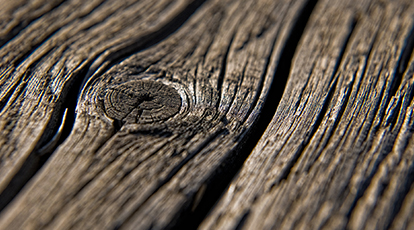
Colours, amongst others, determine the mood of your interior - the right colour combinations.
Colours, light and space influence each other to a great extent.
The colours of the floor, the ceiling and the walls have a substantial optical impact on how you experience the space.
You can make a room seem larger, smaller, wider, narrower, deeper, higher, lighter and warmer.
Which colours for the floor?
You choose a particular floor not only for practical reasons but also because you like a specific colour. When choosing the colour of the floor, you should take into account the desired end result and influence of the other existing or planned colour elements on the interior. The result of this combination is more than the sum of the individual elements. The whole space is given a new identity, as it were. Every room is different and requires a specific approach, depending on the desired end result.
The effect of combining the colours of the floor, ceiling and walls.
A dark floor with pale walls and ceiling widens the room.
A dark floor with dark ceiling widens and lowers the room.
Dark walls in a room with a light floor and ceiling emphasize the horizontal lines.
Light floor, ceiling and back wall: space is narrower, deeper and higher.
A dark back wall and pale side walls and floor decrease the depth of the space.
A light ceiling, dark floor and dark walls result in a basement effect (light only above you).
A light floor, light back wall, dark side walls and a dark ceiling create a tunnel effect.

Light colours enlarge the room and dark colours make a room look smaller. This is generally known; however, what is the effect of the floor?
Dark floors:Dark floors are the ideal starting point to create contrasts. They can be combined perfectly walls in light colours or with other dark colours which are used for highlights and accessories. Avoid harsh white and choose a shade of white such as off-white or white with a dash of a different dye. You can liven things up by adding colourful accessories in the interior. Too many dark colours will in fact result in a gloomy effect with less light and a lack of atmosphere.
You can create a spacious effect by combining a sober and pale floor with light walls. Lighter and cooler colours will make the room seem larger. Dark and warm colours make the room smaller and cosier.
Narrow planks in different lengths. This will allow you to create a more spacious feeling than when you choose wider planks with only a single length.
The colour combination with the skirting boards is also important. A floor appears to be larger when the skirtings have the same colour as the floor. The opposite is also true: a floor appears to be smaller when the skirtings have the same colour as the walls.
Make sure the colour of your floor is either two shades lighter or a lot darker than the colour of the furniture. A floor and furniture in the same colour and wood is only possible if you have a carpet in a different contrasting colour between them.
On a floor in a neutral colour, you should not be afraid to combine furniture made of very dark wood such as wenge or walnut. Light furniture varnished in white will also look very attractive.
Furniture in light wood combined with pale walls and a light floor create a calm ambience in the home. This is a safe approach but you may end up with dull interior. Too much tone on tone can become monotonous. Floors with a yellowish beige colour.
Yellowish beige colours are warm, cosy and create a sense of optimism. Floors with an oak, beach or maple design can make a dark room warmer.
Floors with a reddish orange colour these floors give the room very warm feeling. This colour is often combined with yellow highlights.D) Brown floors?
A brown hue, especially for floors, refers to our alliance with the earth. In comparison with the walls it must always remain in the background. Brown consists of several other colours and this means it can be combined with many other colours. Brown is not a dull colour; it's versatile and suitable for many different interiors, on the condition that sufficient light penetrates the room in order to make the brown colour stand out. In some interiors, a combination is made of complementary colours for the floor and the walls, with the intention of creating a contrast. In other situations, a tone on tone combination is preferred. Tone on tone means that shades of the same colour are combined, but with darker and lighter differences. This can create very harmonious and calm effects; however, it can become monotonous.
Tropic wood types produce very warm floors. These wood types are very lively and for this reason it can be difficult to find matching furniture and wall covering. Tip: keep the walls warm and neutral, e.g. off-white of shades of white. This creates an attractive contrast with the floor. Don't overdo the contrast effects and use maximum one or two different highlight colours.
Colours in dim lighting create a different feeling than the same colours in bright sunlight or artificial lighting. In other words, the light source is an important factor in the room. Light colours reflect light and dark colours absorb light.